
Transport is a popular topic among kids (not just boys), fits in well with other frequent YL themes like toys (“toy vehicle,” etc.), and is likely more beneficial in students’ adult life than many other YL topics. It can also be linked with other language aspects like prepositions of position and movement, describing dimensions, and offering opinions to tie in with CLIL issues like road safety and cultural differences.
The following are some things you might wish to teach regarding transportation, in roughly the order in which I’d offer them:
Common modes of transportation are identified by their names.
- English names for different modes of local transportation (for example, “motorbike taxi”).
- Verbs related to transportation (for example, “get on” and “drive”).
- Collocations (for example, “buy a return ticket” and “take a taxi”).
- Language to speak about transportation in whole phrases (for example, “There is a… from… to…” and “I come to school by…”).
- Examples of typical modes of transportation (for example, “station wagon” for “car,” “tanker” for “truck/lorry,” and “cruise ship” for “ship”).
- Different names for the same object (e.g., “estate/ station wagon” and “lorry/ truck” in British and American English).
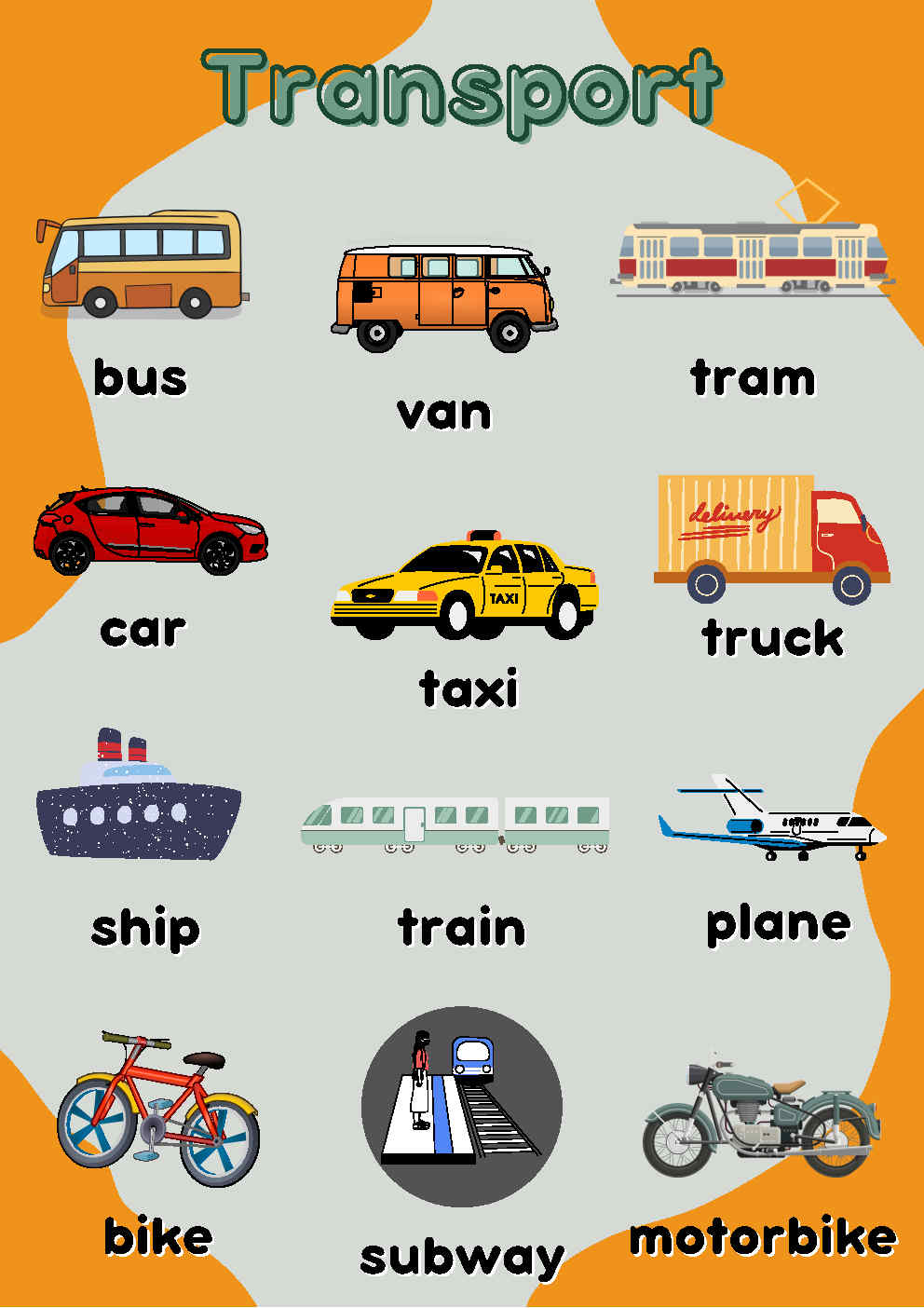
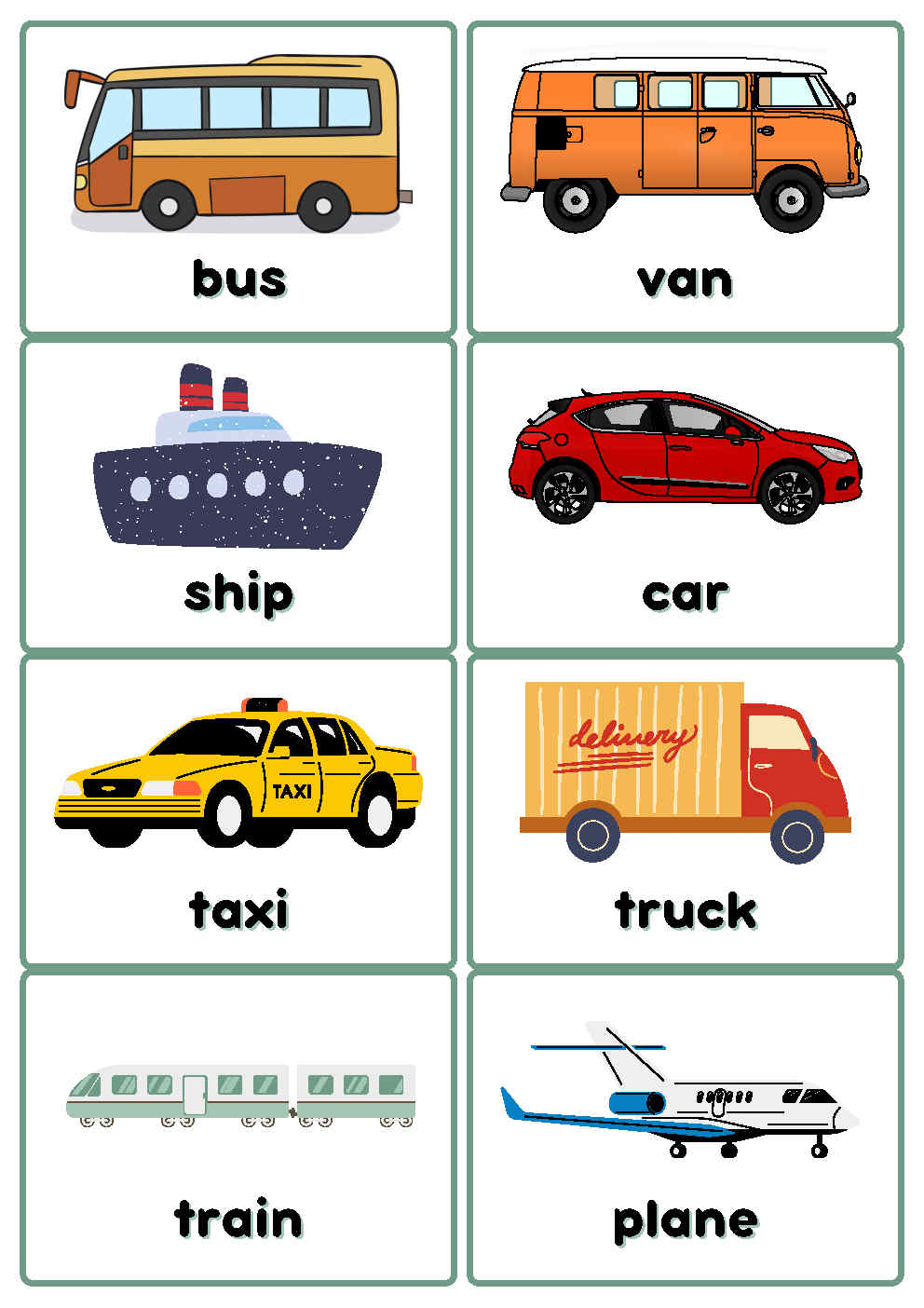
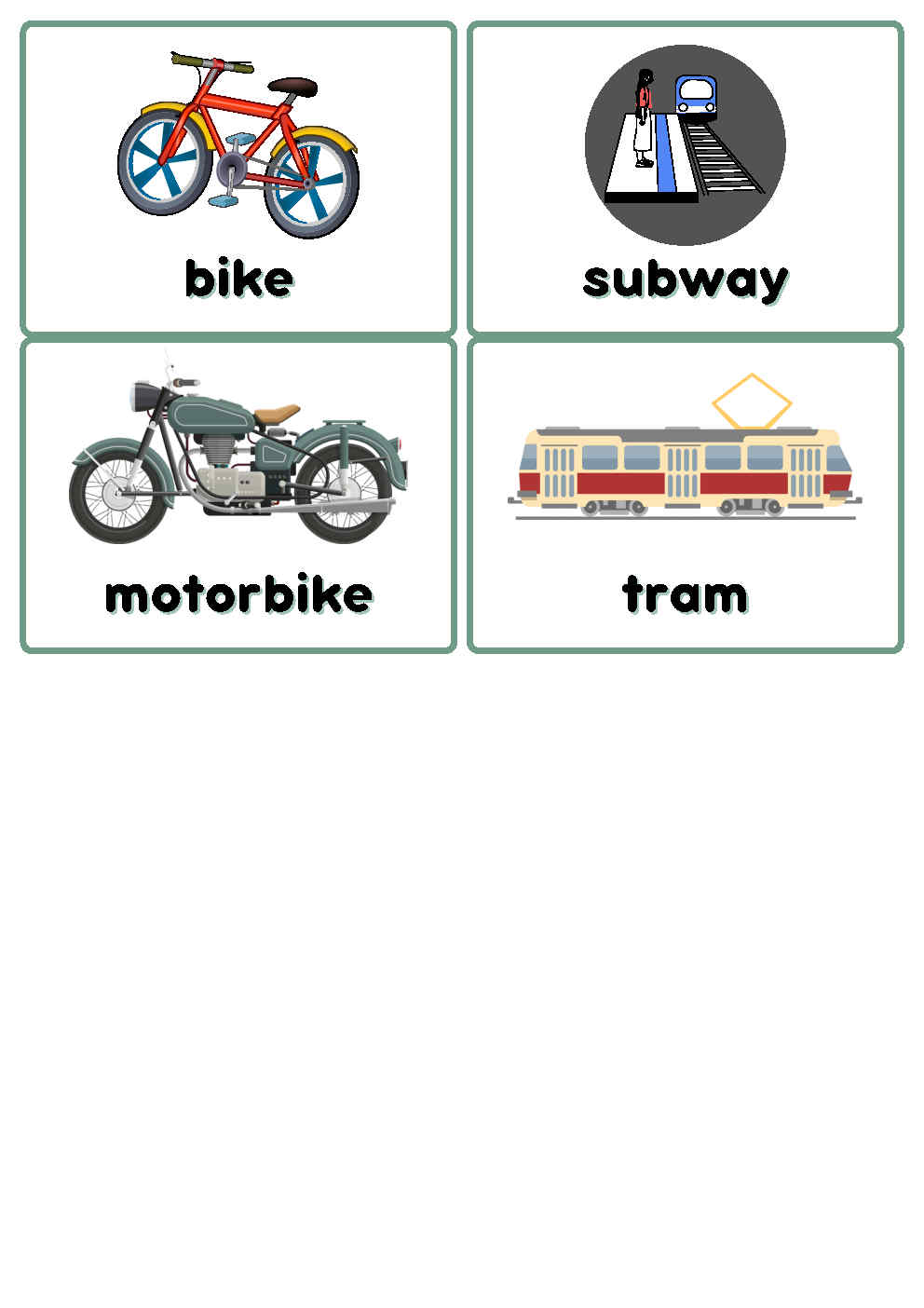
Present-day modes of transportation (e.g. “tram”) are more unusual.
- Animals that can be used for transportation (for example, “horse,” “camel,” “donkey,” and “elephant”).
- Historical modes of transportation (for example, “palanquin,” “horse and cart,” “horse-drawn omnibus,” “steam train,” and “camel train”)
- Future modes of transportation (for example, “horizontal elevator,” “teleport,” “faster-than-light space travel,” “space elevator,” “driverless cars,” “driverless taxis,” “jet pack,” “flying car,” and “amphibian automobile”).
Younger but eager classes may struggle with the concepts of collocations and the like, so stick to names of modes of transportation (particularly more exotic ones) and verbs with such classes.
Transportation can also be coupled with/extended into other moving objects, such as:
- Construction equipment (e.g., a “cement mixer” or a “bulldozer”).
- Farm equipment (for example, “buffalo cart,” “tractor,” and “combine harvester”).
- Emergency vehicles (police car, ambulance, and fire engine/fire truck, for example).
- Military vehicles (for example, a “tank,” a “armoured personnel carrier,” a “fighter,” a “spy plane,” a “stealth plane,” a “bomber,” and a “transporter”).
- Sports-specific transportation (for example, “go kart,” “skeleton toboggan,” and “windsurfing board”).
Other modes of transportation could be included (for example, “skateboard,” “skis,” “wheelchair,” and “moving walkway”).

The following are examples of basic transportation vocabulary:
- the bicycle
- a ship/boat
- public transportation
- car
- motorcycle/ motorbike
- aeroplane/ airplane/ plane
- taxicab
- train
- a truck or a lorry
These are some examples of the fundamentals:
Mountain bikes, BMX bikes, electric bikes, unicycles, and tandem bikes are all examples of bicycles.
- cruise ship, sailing ship/ yacht, rowing boat, canoe, kayak, (rubber) dinghy, steamboat, paddle boat, (passenger/car) ferry, jet ski, pedalo, speedboat, raft, gondola/ punt, barge, tugboat, catamaran, jet foil
- bus – minibuses, coaches/long-distance buses, double-decker buses, shuttle buses, and bendy buses
- automobile – jeep/ SUV/ four-wheel drive, pickup truck, sport car/ coupe, hatchback, saloon, limousine, station wagon/ estate car, hybrid, rally car, racing car/ F1 car, rentacar/ hire car, luxury car, rentacar/ hire car
Dirt bikes, racing bikes, mopeds, scooters, sidecars, and quad bikes are all examples of motorcycles.
Glider, jumbo jet, jet, propeller plane, private jet, microlight, hang glider, supersonic jet – plane/ aeroplane/ airplane
- taxis – shared taxis, black cabs, radio taxis, motorbike taxis, tuk tuks, and rickshaws

express train, steam train, funicular, local train, bullet train, subway, monorail, driverless train, sleeper/couchette, dining car/buffet car, commuter train
- dump truck, articulated lorry, etc. – truck/ lorry
The following are examples of less prevalent modes of transportation:
- a balloon or an airship
- using a cable car
- van camper
Helicopter –
- Helicopters
- a rocket, a spaceship, or an unidentified flying object
- a sled, a sledge, or a sleigh
- snowboarding
- submarine
- tramway
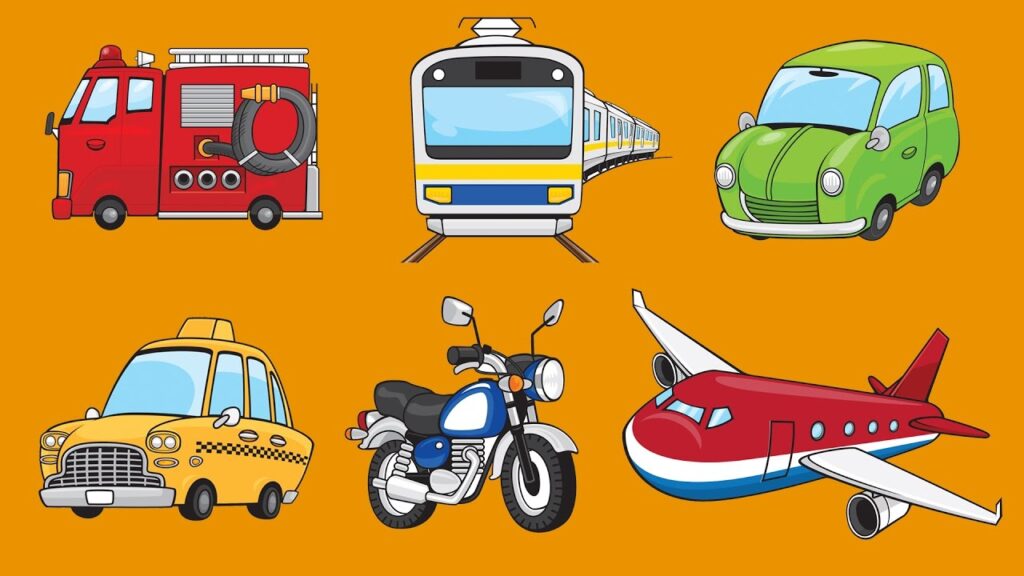
Introducing the Terminology of Transportation
The following are some obvious methods for eliciting the names of modes of transportation:
- When there are noises (recorded or impressions by the teacher)
- Through the use of flashcards
- Playing with toys
- In addition to descriptions
Although this restricts the terminology you can use, mimes can also be used for other modes of transportation, such as:
- With a helicopter (arms swung around above head)
- The bicycle (move one or more feet around in circles)
- Taxi service (mime hailing one)
- Flying machine (arms out like wings)
Motorcycle (put on helmet and rev engine by turning your wrist)
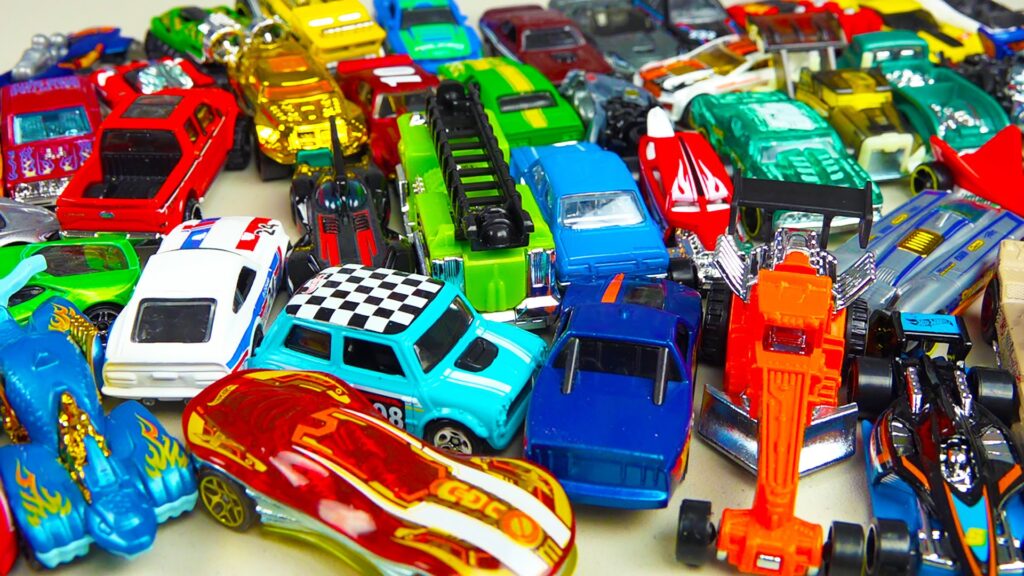
- Ride a Unicycle (balancing with difficulty)
- Watercraft (rowing)
- Automobile (turning a steering wheel)
- The bus or the truck (turning a big steering wheel)
- Take a class (arms moving like the thing connecting the wheels in an old steam train)
- A rocket or a spaceship (arm pointing towards the sky)
- The Submarine (holding nose and moving body down into a squatting position)
With a game I call Transport List Dictation, in which the instructor reads out a list of things that have something in common until one student or team figures out what the connection is, such as that they all have two wheels, you may introduce a lot more vocabulary.
Higher-level classes could create a mind map of transportation vocabulary, explaining or illustrating any that they don’t understand in English

.
Practicing Vocabulary Related to Transportation
In the practice stage, you can utilize noises, flashcards, toys, descriptions, mimes, and brainstorming. Some of these can be combined, for example, having them perform the action and make the noise while sprinting towards the flashcard whose name the teacher has shouted out. They can also utilize noises and other adjectives with a transport word, such as imitating the sound of a sluggish car or an old train (i.e. a steam engine).
Students might use toys to determine what a Transformers-style robot transforms into (from a toy, picture, or video), or add various modes of transportation to a model railway picture. They can also create their own transportation toys and explain what each one does (e.g. the dump truck can really squash rubbish and the helicopter can move up and down on a pole). They could also choose the toy they wish to use for a specific challenge, such as pushing a flashcard across the floor that the teacher calls out or balancing on their head.
If you want students to describe different modes of transportation for their classmates to guess, you may need to provide some assistance with categories or language, such as:
- The number of individuals (or used for transporting things rather than people)
- Verbs that are frequently employed with that mode of transportation (for example, “people get on and off this item”).
- If they or someone they know can drive, ride, fly, or sail one.
- Other personal experiences (for example, “I’ve seen one but have never been in/on one”).
- Some of it, at least (e.g. engine, carriage, wing)
- Sentences describing length, weight, and height (for example, “It’s as huge as a whale,” “It’s bigger than this room,” and “It weighs roughly 500 kilogrammes”).

At the practice stage, the brainstorming indicated above for presenting the language can be converted into a race, such as encouraging students to write as many “items with two wheels” or “transport without an engine” as they can in two minutes.
Combining two or more modes of transportation (e.g. drawing a pedal-powered taxi or a submarine/plane), adapting some modes of transport for a completely different environment (e.g. a bicycle for a really steep mountain or a rowing boat for the ocean), changing a mode of transport as much as possible (e.g. a train until it is almost unrecognisable), and drawing an around-the-world trip on a map with a different mode of transport They should write descriptions of what they’ve made in all of these scenarios and/or present their ideas to other students.
You can also personalize the topic as long as you keep in mind that most students will only have traveled in a few modes of transportation. Give them sentence stems like “have touched,” “want to buy,” “have a toy,” and “saw last week” to take advantage of this. These can be used for games like bluffing, questionnaires, or guessing true facts about their classmates.
If students can view a street from the classroom, they can race to count the many modes of transportation that are now available or guess what will arrive next. Streamed CCTV of streets and other movies, such as of dumb driving, should be able to do the same thing. You may also ask them to guess what will happen by freezing a movie that includes several modes of transportation (e.g., “The bicycle will pass the slow car”). They may also guess the mode of conveyance based on the sound alone in a movie, then double-check with the visual.

There are also numerous popular animated films and television shows, as well as novels, computer games, card games, and songs, on the subject, such as:
- Pixar Animation Studios’ animated films Cars and Cars 2 are two sequels to Cars.
- The animated television series Chuggington
- Thomas the Tank Engine novels and television series
- The Wheels of the Bus Songs and books on the tune “Go Round and Round”
- Song and books: Down by the Station (Early in the Morning)
- 10 Little Aeroplanes, Over the Mountains, and Stop Look Listen Think, all animated tunes (both on LearnEnglishKids, the third one for road safety)
Top Trumps is a card game.
- Can Cars Fly? is an interactive turn-the-flap book.
- We All Go Traveling By, a song, book, and YouTube video.
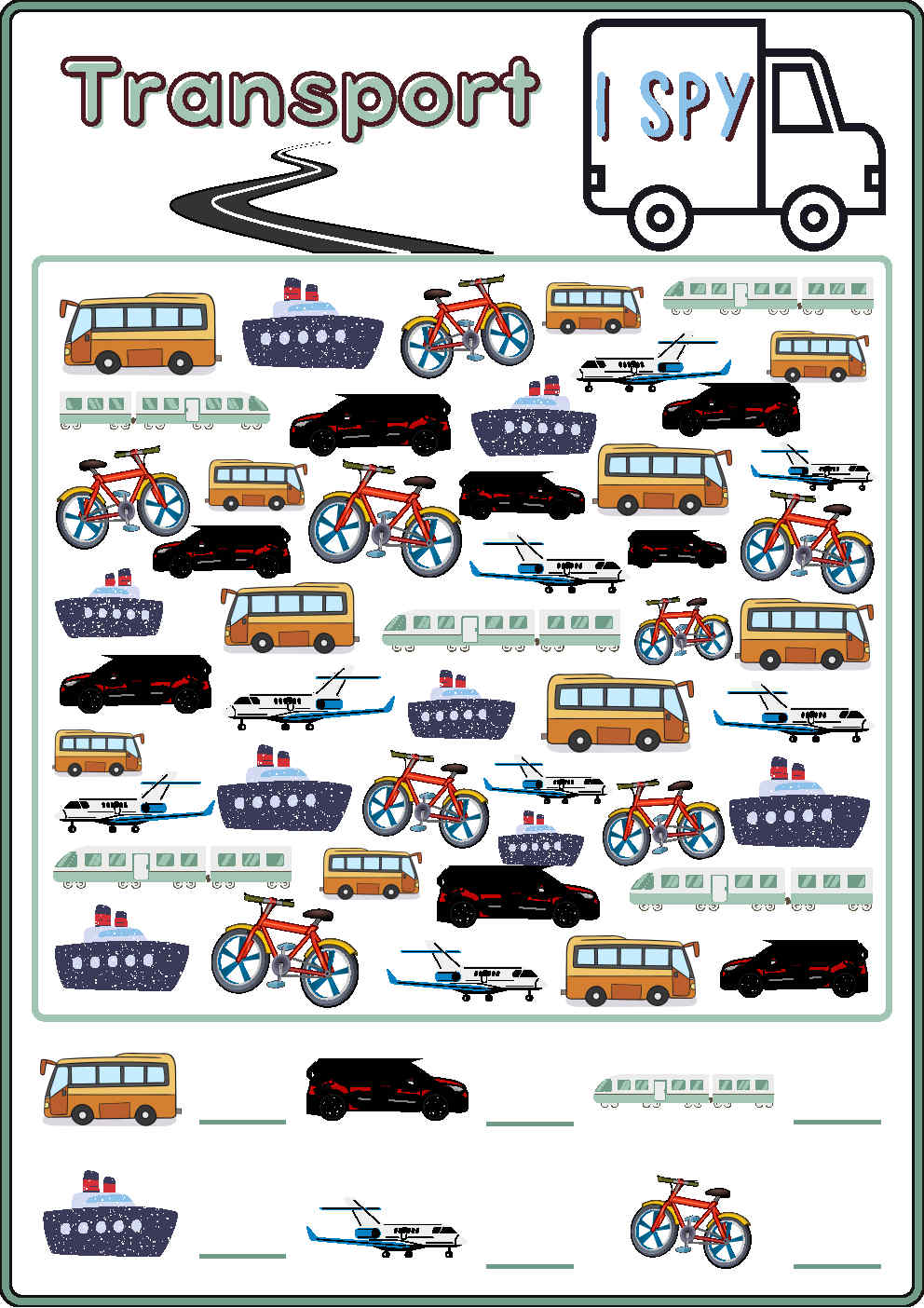
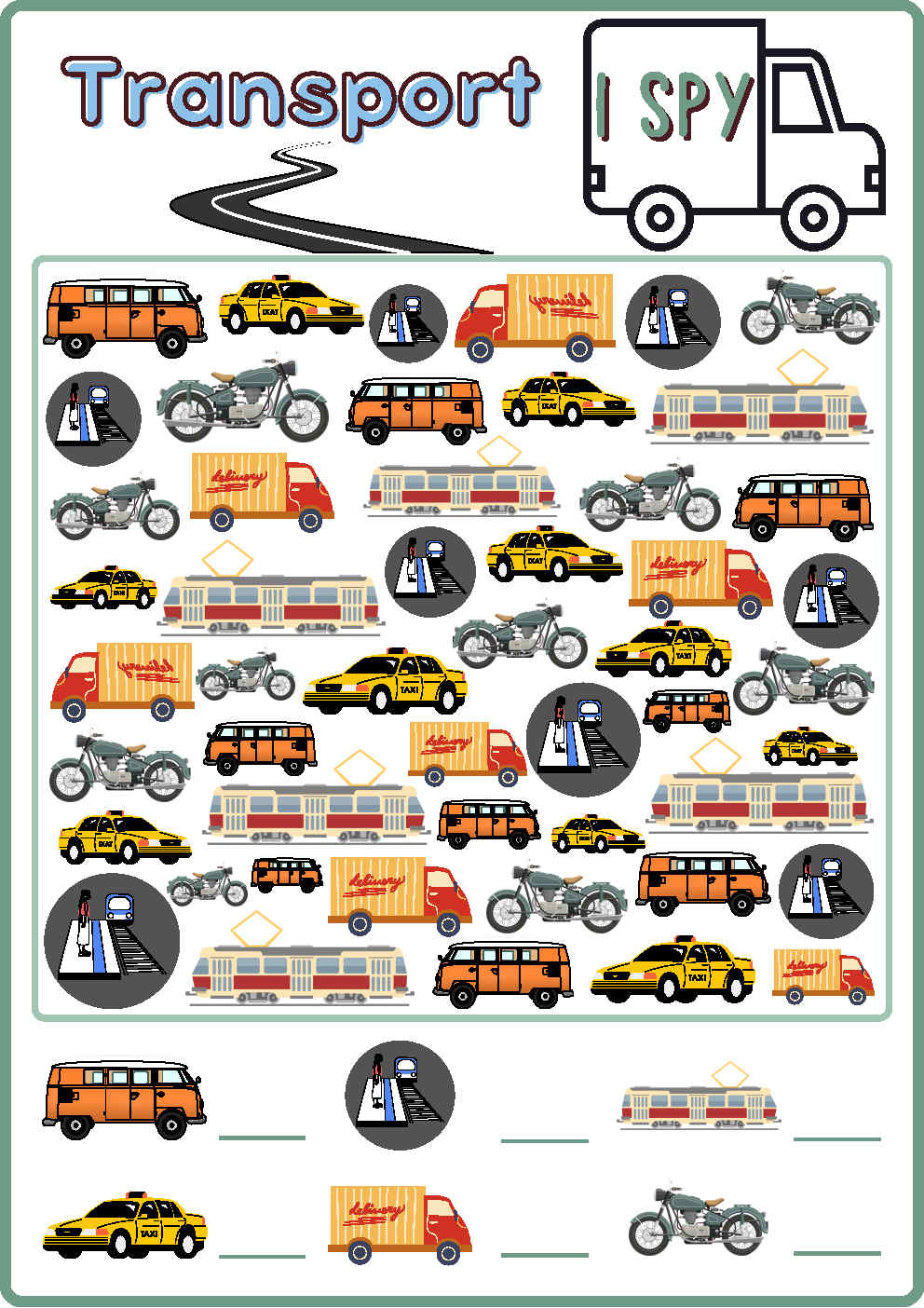





GIPHY App Key not set. Please check settings